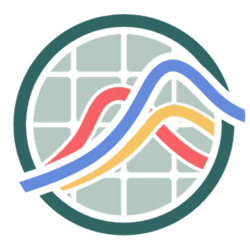Qi2013 - IL-6 and IFN crosstalk model (non-competitive)
BIOMD0000000543To account for the possibility of different IFNR and gp130binding sites for STAT1 and STAT3, model 1 [BIOMD0000000543]assumes that there is no competition between STAT1 and STAT3 forthe receptor complexes (includes two extra reactions).
The reverse of this is true in model 2 [BIOMD0000000544]where it generally is assumed that there is competition betweenSTAT1 and STAT3 for the receptor complexes.
This model is described in the article:
Abstract:
BACKGROUND: Interferon-gamma (IFN-gamma) and interleukin-6 (IL-6) are multifunctional cytokines that regulate immune responses, cell proliferation, and tumour development and progression, which frequently have functionally opposing roles. The cellular responses to both cytokines are activated via the Janus kinase/signal transducer and activator of transcription (JAK/STAT) pathway. During the past 10 years, the crosstalk mechanism between the IFN-gamma and IL-6 pathways has been studied widely and several biological hypotheses have been proposed, but the kinetics and detailed crosstalk mechanism remain unclear. RESULTS: Using established mathematical models and new experimental observations of the crosstalk between the IFN-gamma and IL-6 pathways, we constructed a new crosstalk model that considers three possible crosstalk levels: (1) the competition between STAT1 and STAT3 for common receptor docking sites; (2) the mutual negative regulation between SOCS1 and SOCS3; and (3) the negative regulatory effects of the formation of STAT1/3 heterodimers. A number of simulations were tested to explore the consequences of cross-regulation between the two pathways. The simulation results agreed well with the experimental data, thereby demonstrating the effectiveness and correctness of the model. CONCLUSION: In this study, we developed a crosstalk model of the IFN-gamma and IL-6 pathways to theoretically investigate their cross-regulation mechanism. The simulation experiments showed the importance of the three crosstalk levels between the two pathways. In particular, the unbalanced competition between STAT1 and STAT3 for IFNR and gp130 led to preferential activation of IFN-gamma and IL-6, while at the same time the formation of STAT1/3 heterodimers enhanced preferential signal transduction by sequestering a fraction of the activated STATs. The model provided a good explanation of the experimental observations and provided insights that may inform further research to facilitate a better understanding of the cross-regulation mechanism between the two pathways.
This model is hosted on BioModels Database and identified by: BIOMD0000000543.
To cite BioModels Database, please use: BioModels Database: An enhanced, curated and annotated resource for published quantitative kinetic models.
To the extent possible under law, all copyright and related or neighbouring rights to this encoded model have been dedicated to the public domain worldwide. Please refer to CC0 Public Domain Dedication for more information.
Max Y
And translate the model using SBMLtoOdin::importSBMLfromBioModels(BioModel_ID, file_name)
Project idea and SBMLtoOdin: Leonie Lorenz and John Lees,
Development of Menelmacar website: Antoine Andréoletti,
Web design: Andrea Epifani, Zeqing Lu (Gomoku Studio)
Models are sourced from EMBL-EBI's BioModels
BioModels 